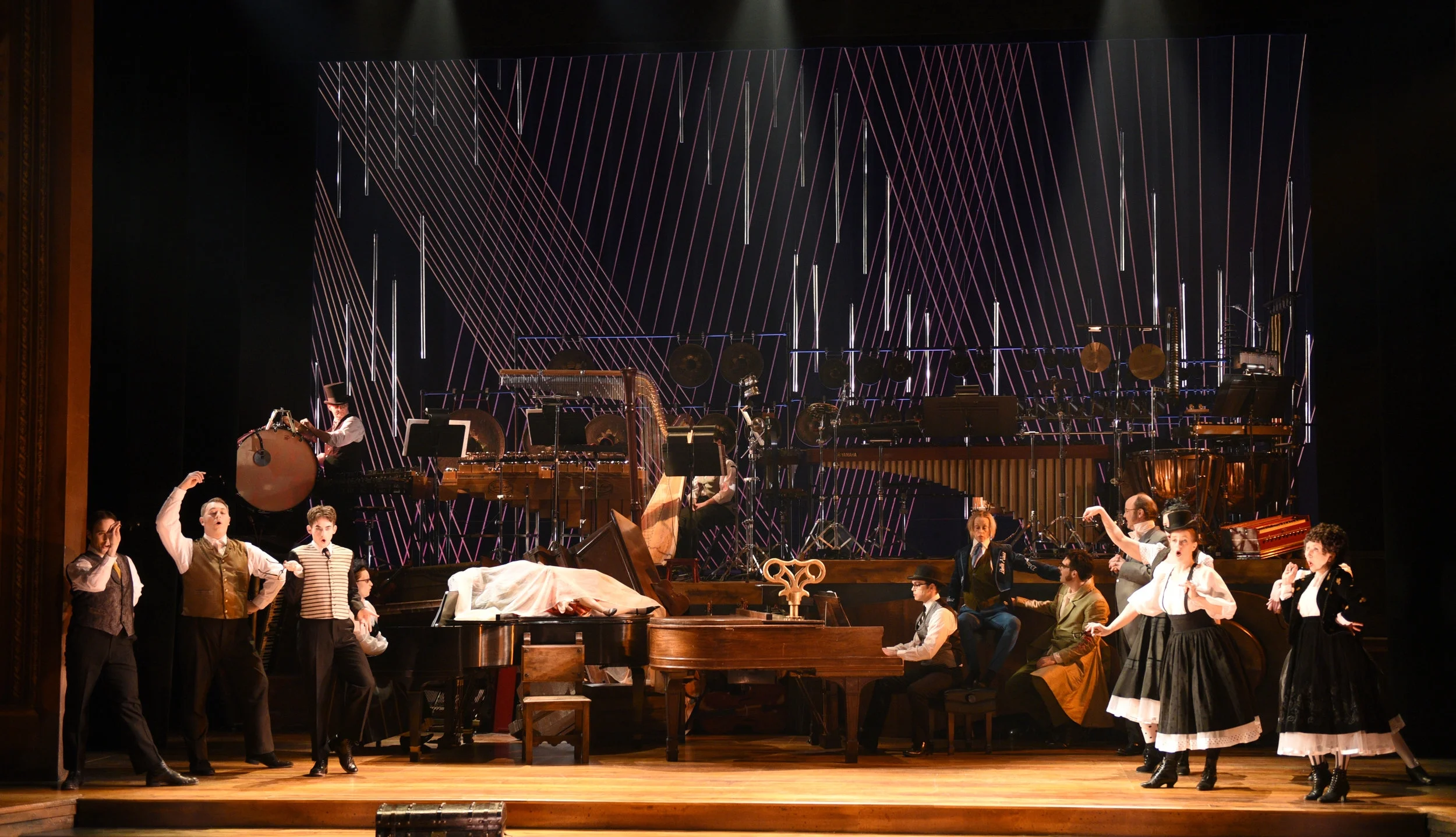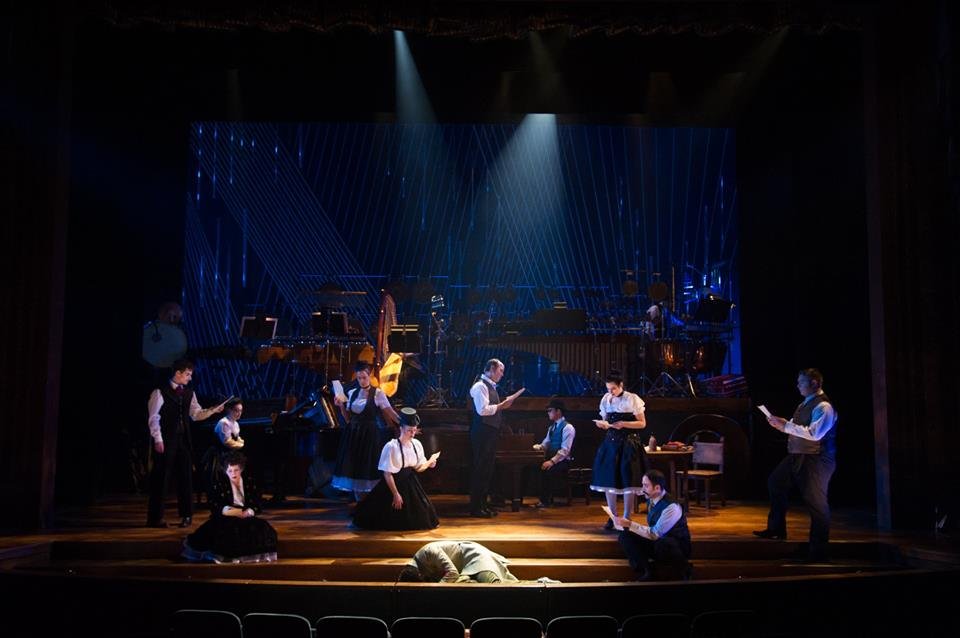by Kelsey Lawler
Instrument strings, a violin's curve, a handful of pianos, a gilded harp, a barrage of percussion. With the scene thus set, the actors and audience find themselves immersed in music even before the first notes are sung at the Cabot Theater for the Skylight's Tales of Hoffmann, a collaboration with the Milwaukee Opera Theatre. The kinetic scene celebrates the inner workings of the art of music-making - just as Hoffmann's tales, though tragic, shed light on the artist's journey from inspiration to creation.
The story follows the idea-starved poet, Hoffmann, and his artistic muse along a three-pronged quest for love and vision. In the first chapter, Hoffmann's love interest is a mechanical doll. In the second, it's a girl who suffers from a rare disease wherein she will die if she sings. The third finds the protagonist enamored with a deceitful courtesan who steals his reflection. Each tale is otherworldly - and each, though playful at times, ends in tragedy.
It helps that this collaboration is presented in English. It's a brand new translation, unveiled for the first time in Milwaukee. The once sung-through, French opera of over three hours has been distilled into three acts, clocking in at about two hours of stage time. Spoken dialogue breaks up the soaring voices, too, giving the audience some respite from deciphering the lyrics. Yes, even an opera sung in English requires ample concentration. Read the audience guide beforehand.
Bringing the Tales to life is a cast of thirteen - eight women and five men, many of them Skylight and MOT veterans. As there are more parts than people, the villain is played by the previous lover in each subsequent tale - a fun opportunity for the sopranos. Truly, the three sopranos - Cecilia Davis, Susan Wiedmeyer, and Ariana Douglas - are each sensational. In particular, the Doll's Song in Act One is like the olympics of arias. Davis masters it with such spellbinding ease, it's an absolute wonder to behold.
Then there's Hoffmann himself, played by the brilliant John Kaneklides. Breathtakingly sublime, his tenor voice cuts through all others with its richness and warmth. Plus he's tall, dark, and handsome to boot - the textbook leading man. This is swoon-worthy stuff. Hoffmann's muse, the always-wonderful Diane Lane, lends a dash of humor and jaunty energy to the sometimes over-emotional journey. Lane's presence on stage is a constant delight - and her consistently strong vocals don't hurt either.
The overall tone of Hoffmann is rife with broken hearts and a healthy dose of the macabre. With this comes a wondrous, dreamlike quality that the Skylight and MOT have captured exquisitely.
The scenery itself, the on-stage orchestra, the celestial lighting, and creative ways in which characters come and go - it all serves to highlight the fantasy in this "opera fantastique."
Kudos to Scenic Designer Lisa Anne Schlenker, Lighting Designer Jason Fassl, and Stage Director Jill Anna Ponasik for the surreal and artful staging.
In the final scene, a celestial light bathes the stage as Hoffmann reflects upon his series of tragic romances. At one point, the Muse had said, "Love sure knows how to keep us in the dark." Now that darkness is illuminated, getting to the heart of the matter in Offenbach's opera.
The Tales of Hoffmann, for all its supernatural qualities, shows that through darkness and confusion, new ideas come into being. The curtain falls with the poet's flame rekindled - his artistic inspiration renewed. Ethereal and uplifting, the Skylight and Milwaukee Opera Theatre have indeed dug deep into the darkness and brought to light something to sigh about.



